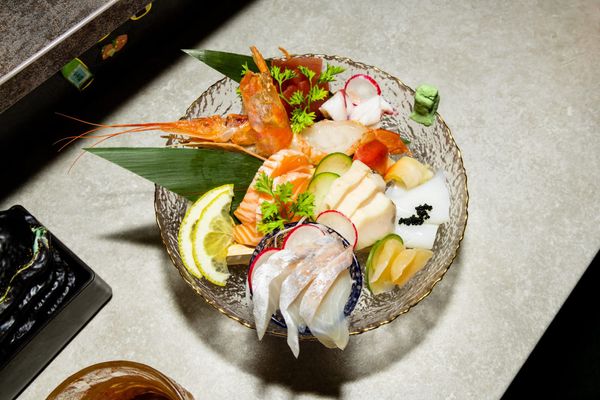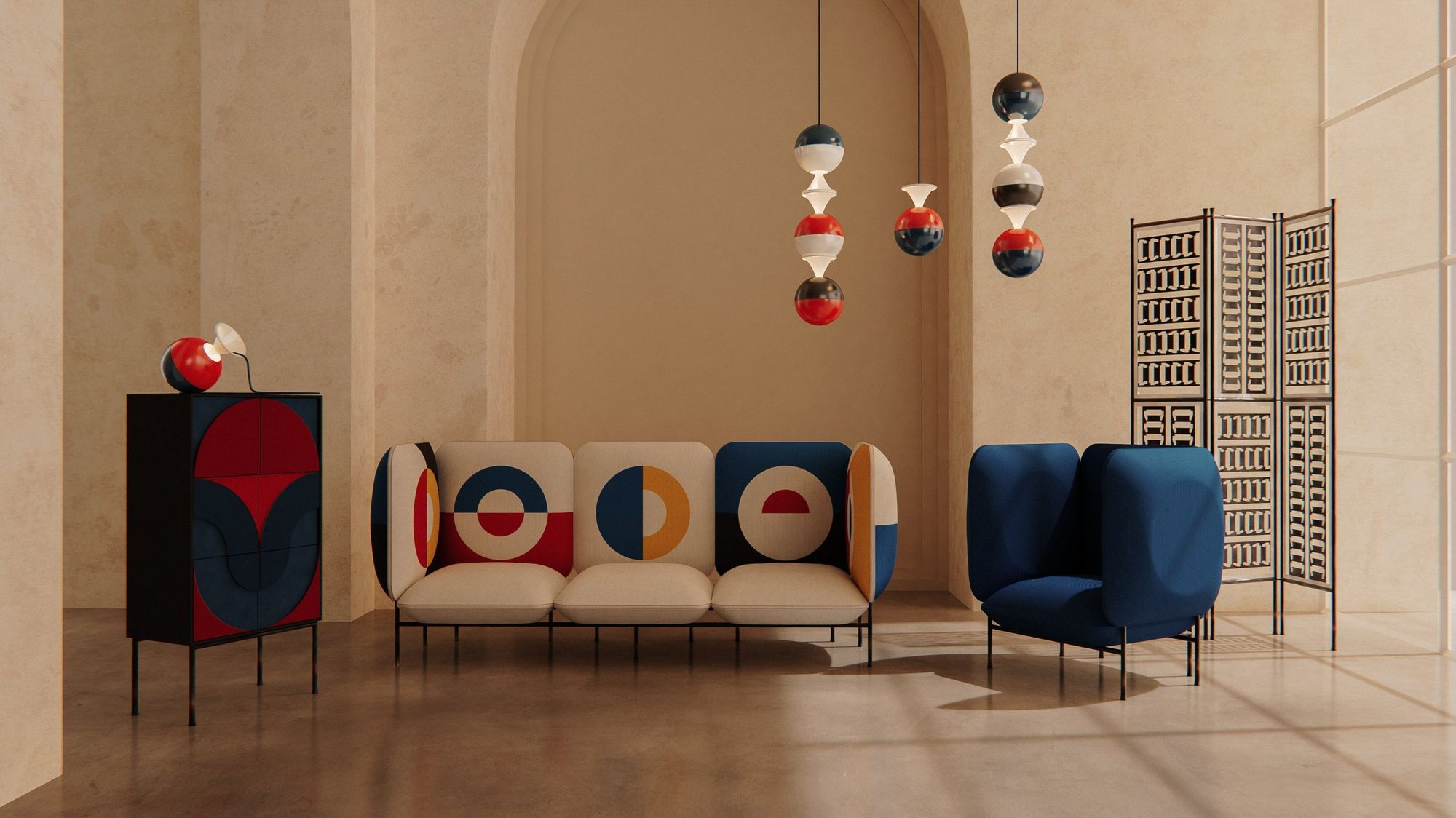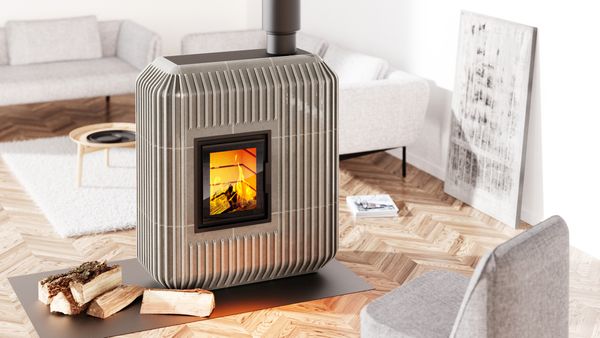We first met Annabella Hevesi and Gábor Bella in the summer of 2021 when we collaborated on the Artist duo series. At that time, they were already in the midst of researching the oeuvre of Ferenc Lantos, with the book Burnt Geometry in their hands and material samples lined up on the shelves. Almost a year of research, design, and product development has come to fruition; the four product lines of the Burnt Geometry collection have debuted at a pop-up exhibition at Zipernowsky Studio.
It is rare to see collection shows from Hungarian design studios in the domestic design scene, especially those that are precisely planned from start to finish, from the products to the catering to the event’s program, and that authentically represent the designer’s personality and creative credo. The three-day pop-up show of IO—Line and Round delivered this kind of authenticity, while the furniture and objects designed by Annabella Hevesi led back to the Hungarian art scene of the 1960s and 1970s and paved the way for the international scene of contemporary object design.
The Burnt Geometry collection draws on many different cultural and artistic references. One of its starting points is the design credo of the Hungarian members of the Bauhaus (such as László Moholy-Nagy and Marcell Breuer), while Lajos Kassák, a follower of the Bauhaus constructivist movement, and also in the context of geometric constructions, Victor Vasarely, an op-art artist, are among the exemplary figures. However, the main source of inspiration for the collection is Ferenc Lantos, founder of the Pécs Workshop, who, between 1967 and 1972, together with his colleagues, created experimental works in the local enamel works at the Bonyhád Enamel Art Workshop.
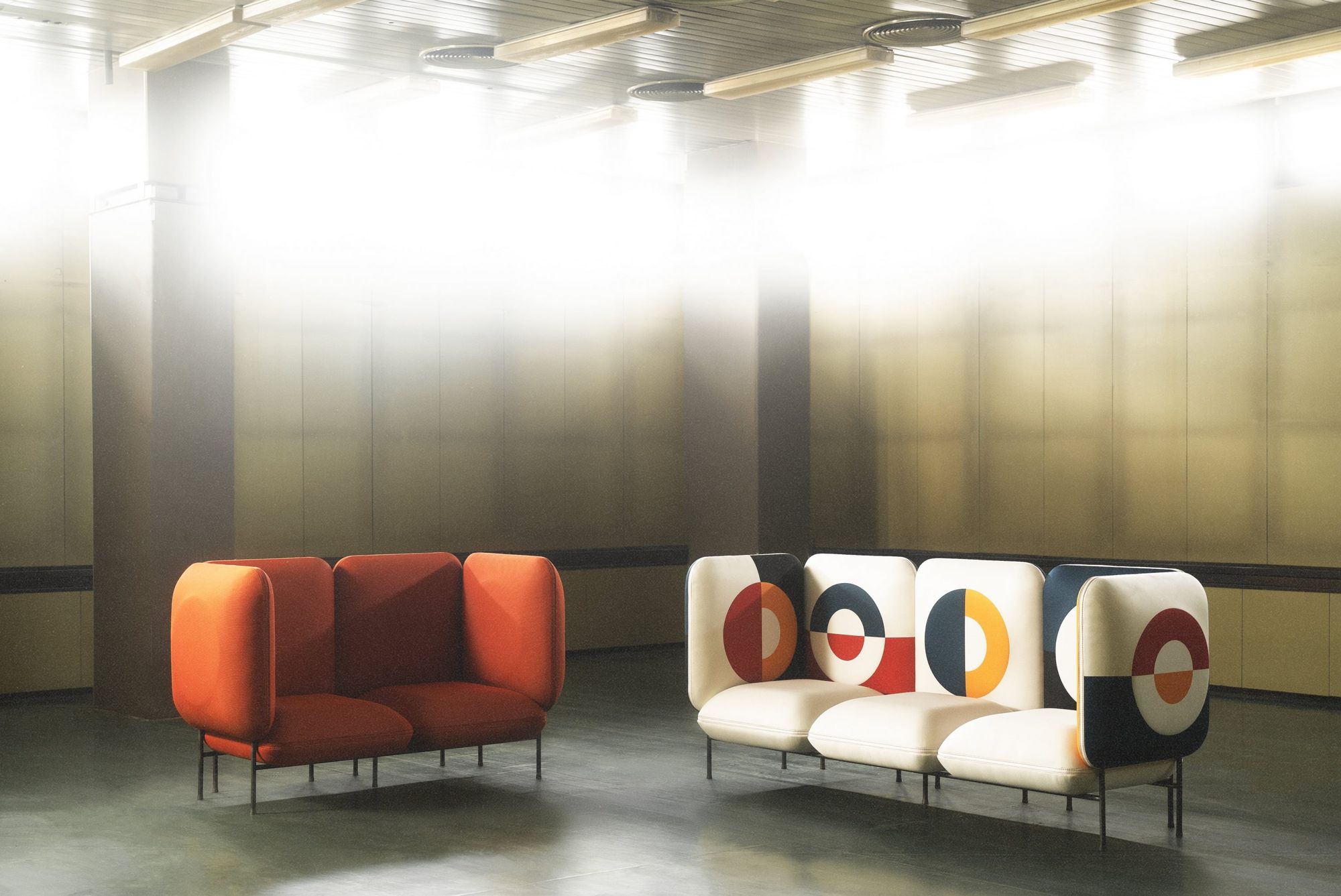
With the Roly-Poly lamp family, I O is also paying tribute to the creators in Bonyhád, as the enameling is done in the factory there. The “roly-poly toy” shape of the lamp evokes the work of the Bonyhád makers and the atmosphere of the 1970s, and its colors are strongly inspired by the work of Ferenc Lantos. A single element can be used as a table lamp on its own or arranged in a row to form a suspended, sculptural ceiling light. The red-blue-black color mix, the geometric elements, the combination of quarter arches and the layering are all recalled in the Vanishing Cabinet. The primary source for this object was Lantos’ geometric tulip motifs, but the designers were also influenced by Hungarian folk decorative traditions and their continuation in art (for example, in the paintings of Dezső Korniss). The front is not the only highlight of the cabinet: its backplate is an iridescent metal plate patinated inside and out by firing, and its thin legs are a subtle tribute to the enamel technique. The designers say that the slender legs with their patinated steel surfaces, which give a floating effect, are intended to evoke the visual language of the supports used in kilns and the industrial environment.
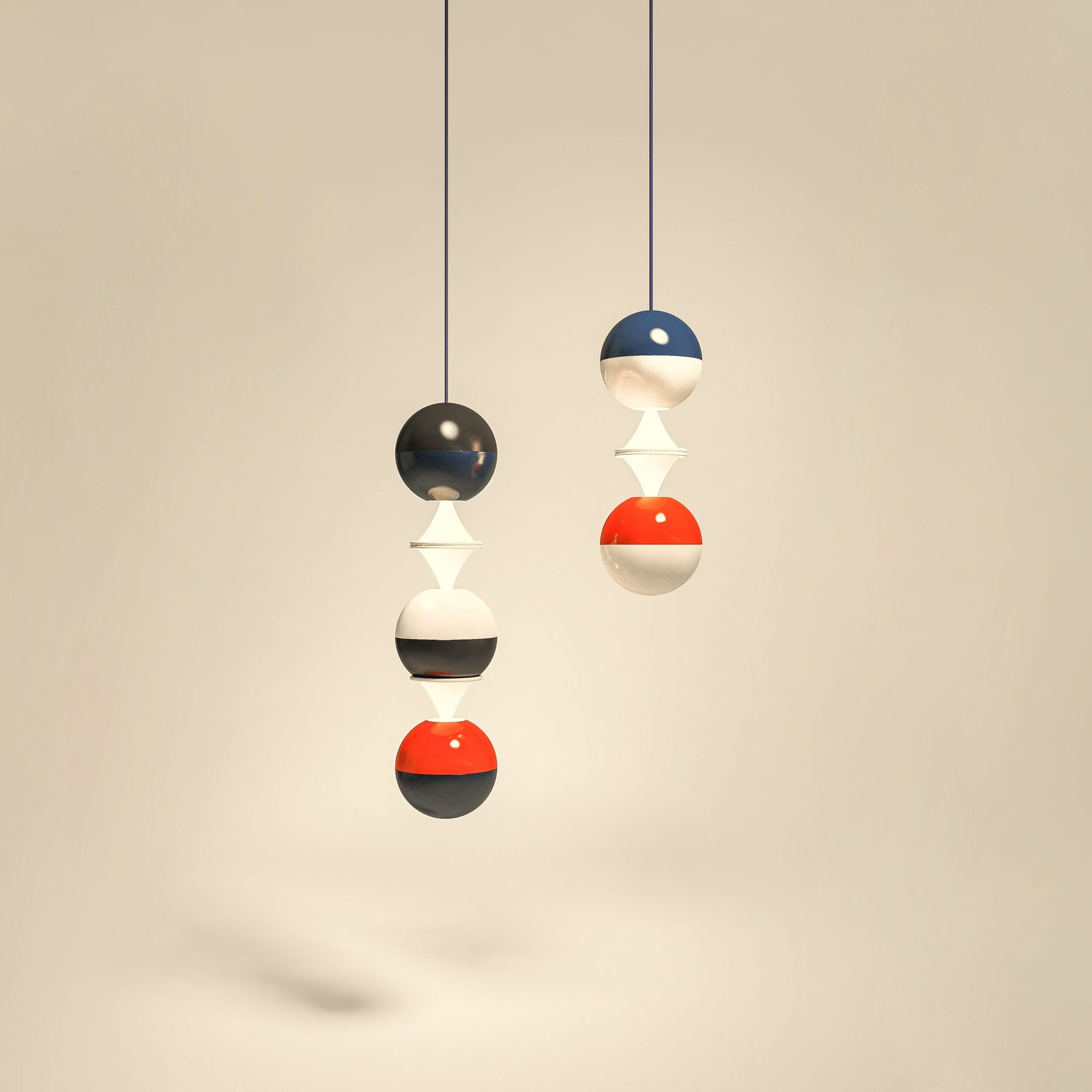

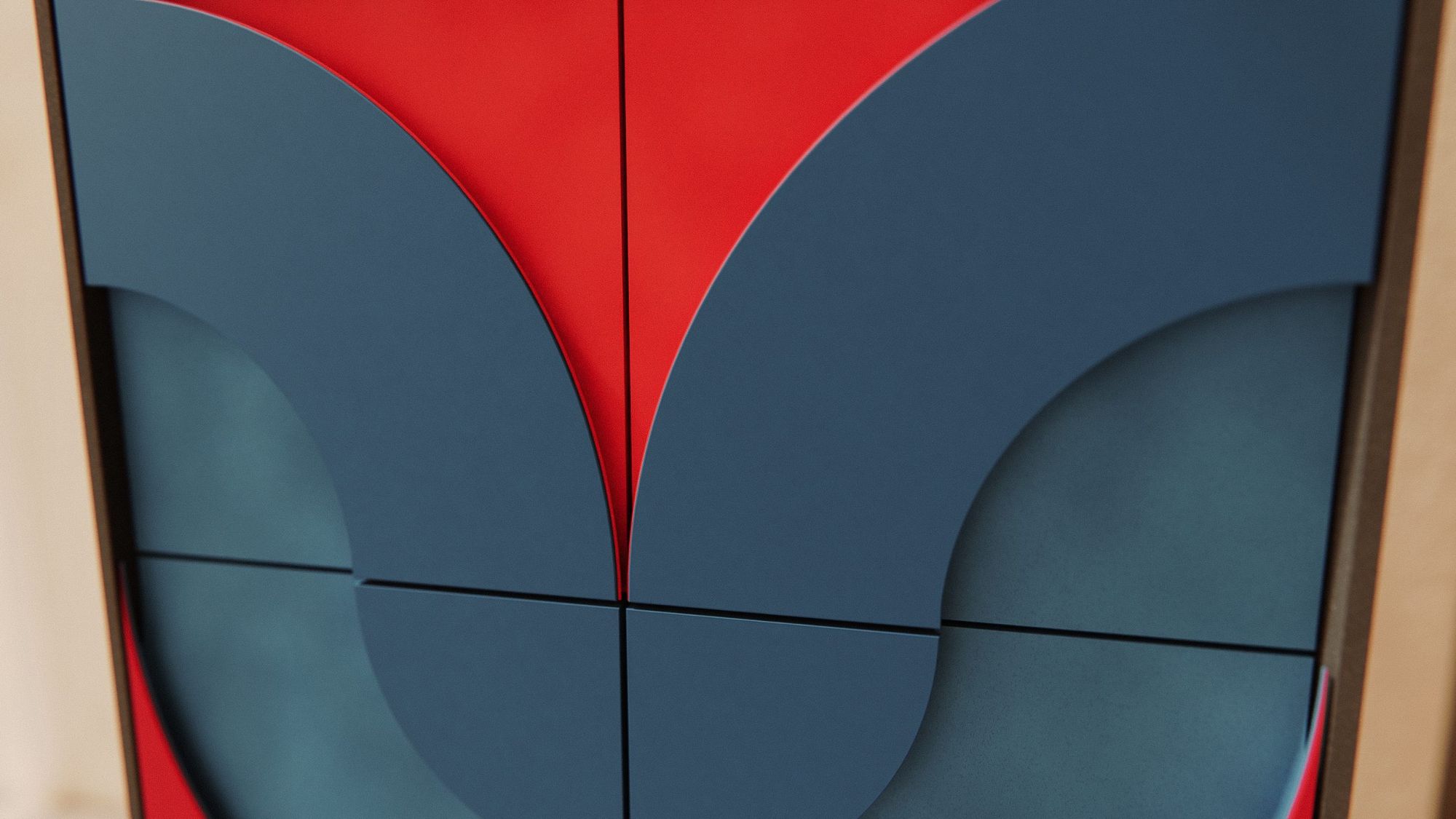
A similar leg design was used for the Dedas range of seating furniture, created with the support of the HFDA Design Lab, whose sofas are intended for public spaces. While comfort is not the first thing that comes to mind when you see the sponge elements meeting at tight right angles, the lenticular curves help to relieve the rigidity of the furniture. I waited for the opening from the sofa, and I was sitting comfortably. The Dedas fulfills its intended function, the raised wall version can be interesting from an acoustic point of view in special spaces such as waiting rooms, offices. The right balance between square and round makes the furniture exciting and a kind of ars poetics—the designers always associate angular shapes with masculine and round shapes with feminine features and always seek harmony between them (just think of the name I O—Line and Round).
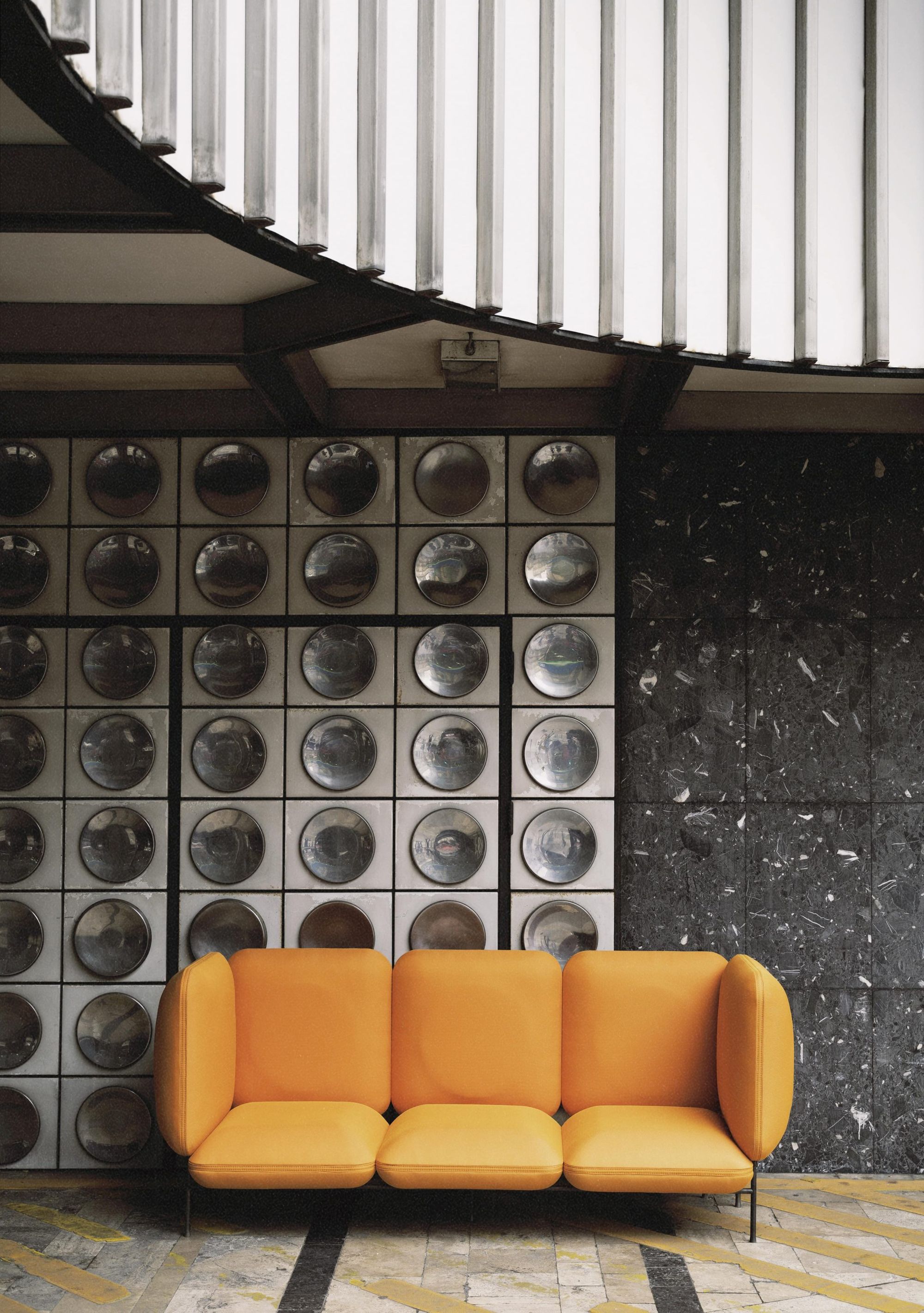
In many respects, the most exciting piece in the collection is the DAD’S FENCE divider, which despite its geometric elements and assorted patterns, is only loosely connected visually to many of the pieces in the collection. The divider is also only indirectly linked to Ferenc Lantos, drawing more on the social conditions of rural Hungary in the 1970s.
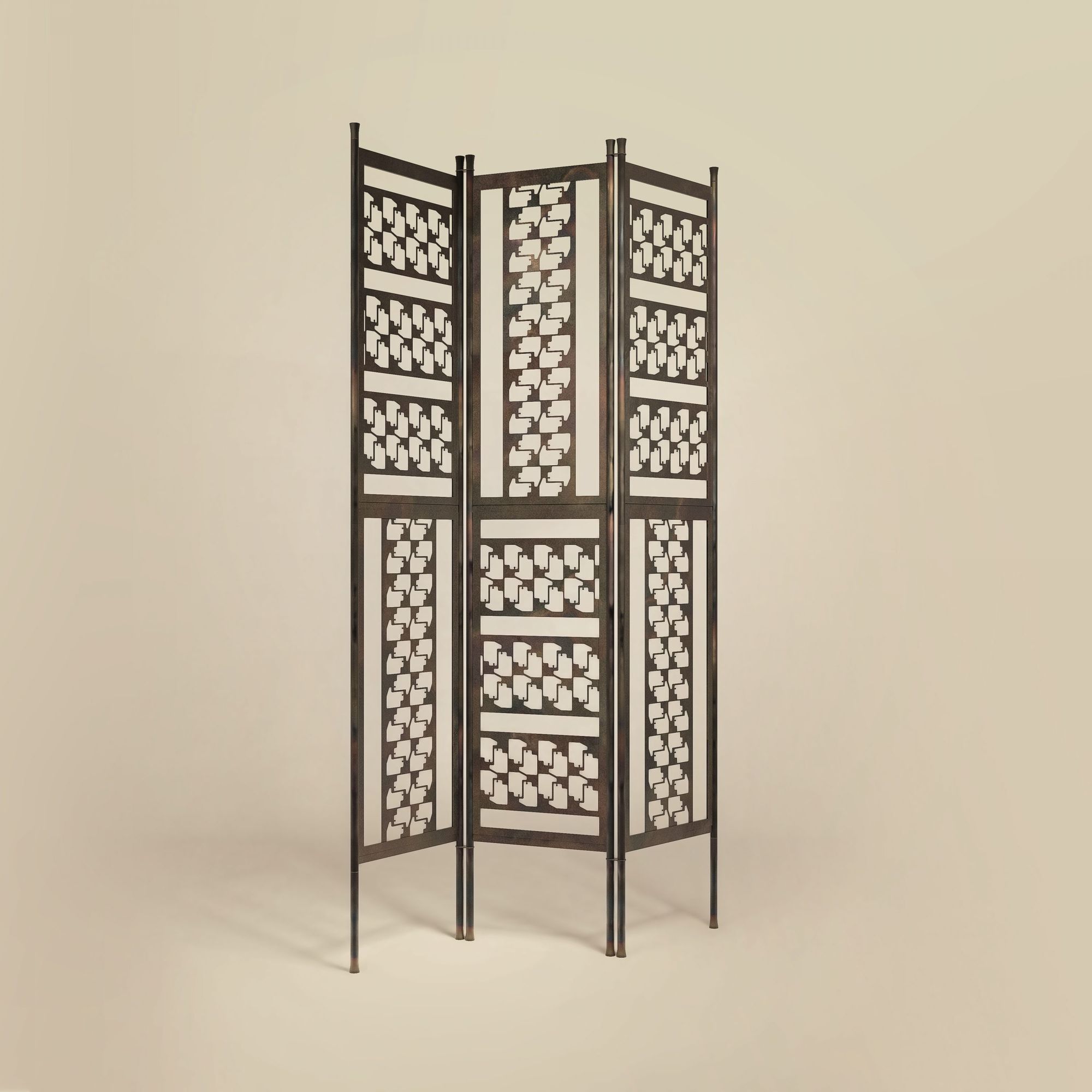
“In those days, around every Hungarian town, where some sort of metalworking plant was operating, especially around those who were dealing with some kind of metal stamping, extrusion, or punching, we began to see fences made from strips of steel plate with a unique pattern,” reads the article about the object, which was created from the leftover scrap from metal sheet laser cutting. The process is also interesting because Annabella Hevesi, whose works result from a very conscious design process, lets go of control and only defines a framework, leaving a lot of room for randomness. The aesthetics of absence and tampering, the thematization of a socio-cultural phenomenon and the eclipse of the strict function of the partitions make the object stand out from the rest and almost position it as a work of art. Perhaps most of all, but also in the other elements of the collection, the formal and technical solutions are all based on some kind of cultural reference and on long research and experimentation. Annabella Hevesi’s Burnt Geometry collection draws on the works of Ferenc Lantos, a pioneer of the Hungarian neo-avantgarde based on Bauhaus principles, as well as on elements of folk art and everyday life in Hungarian rural society in the 1970s. She analytically incorporated her inspirations into concrete formal and technological solutions while also taking sustainability into account. To the designers’ question of whether this collection can contribute to the search for a Hungarian design identity, we vote yes.
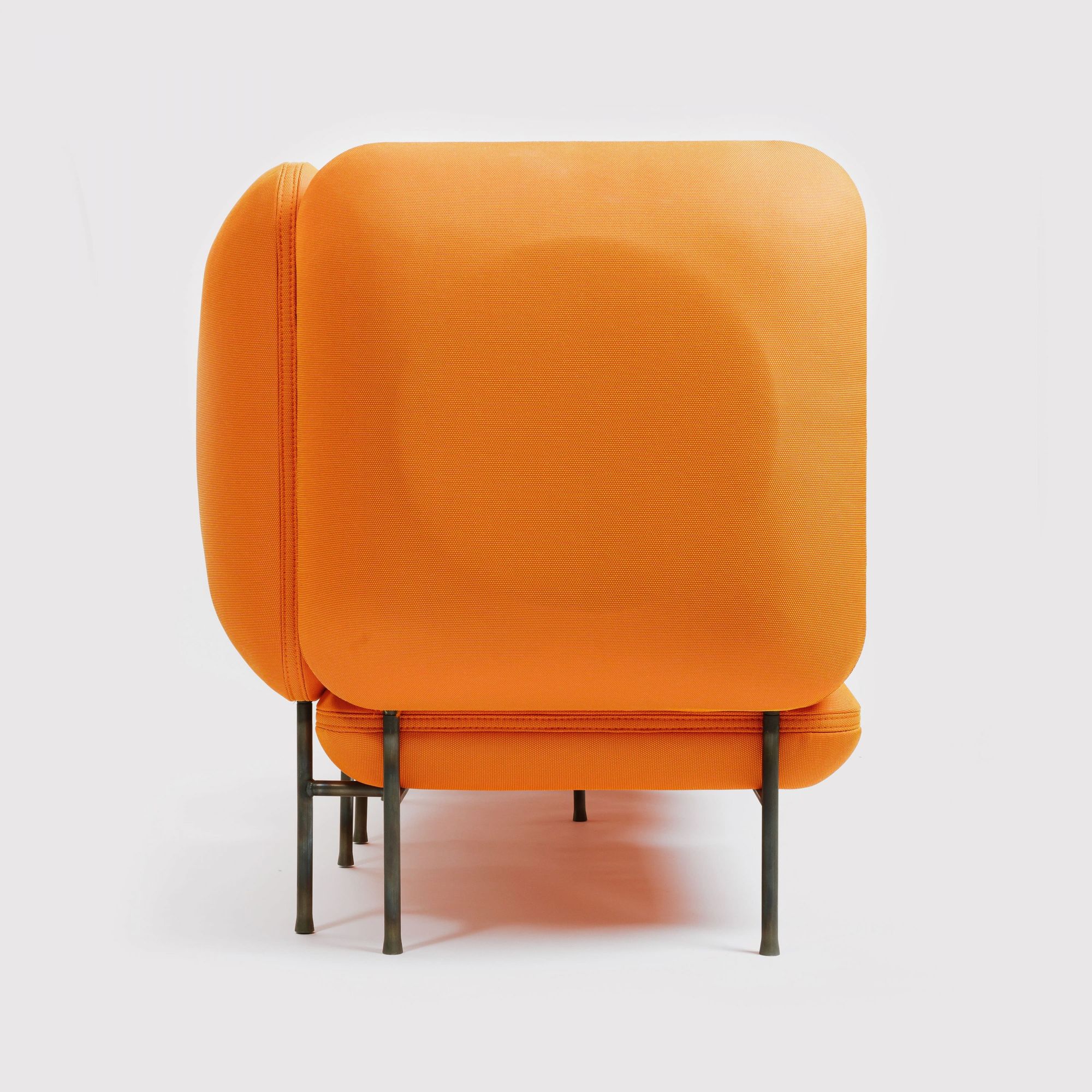

Burnt Geometry | Web
I O | Web | Facebook | Instagram

ASRV introduces world’s first activewear made with NASA-approved technology
